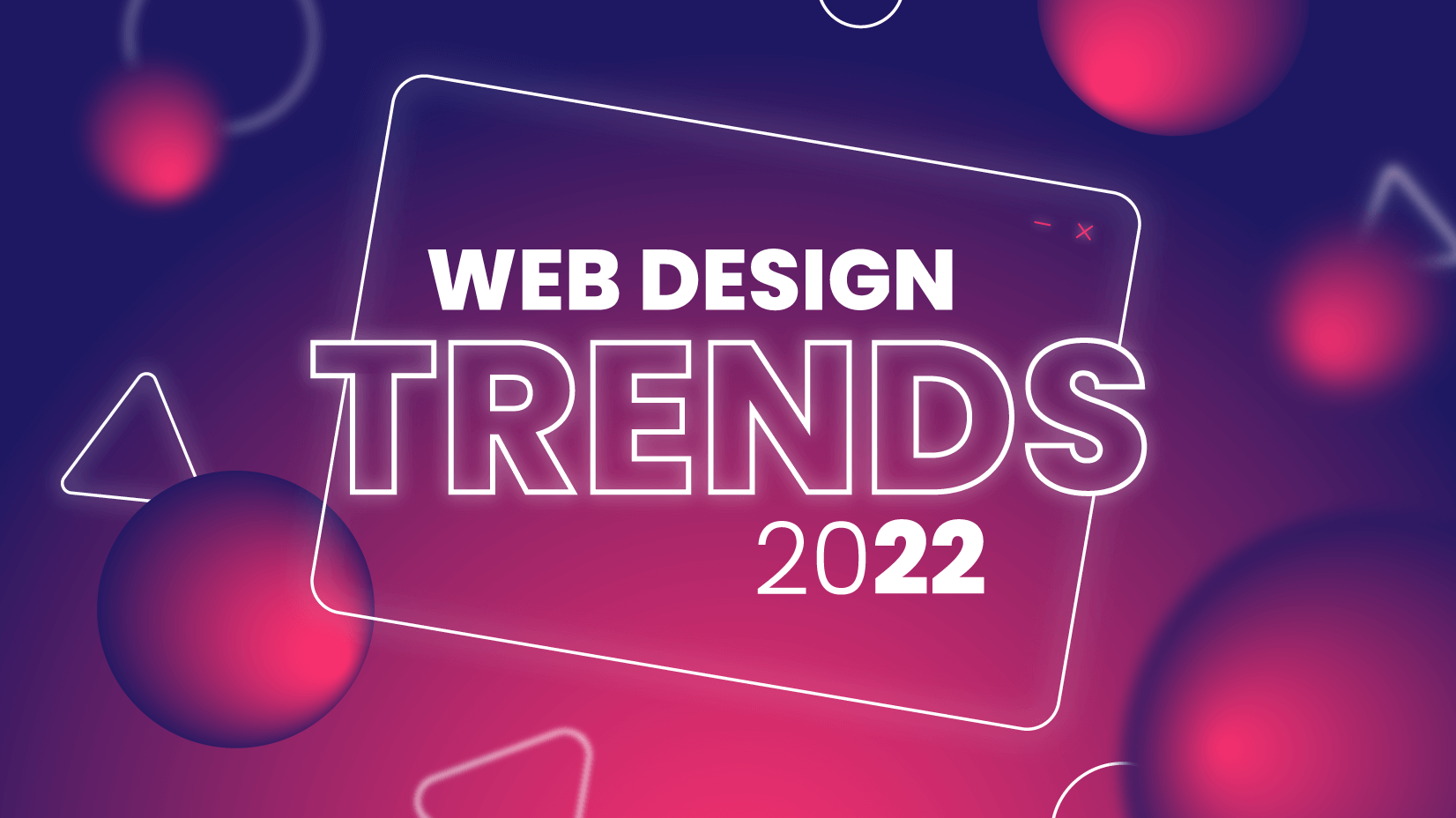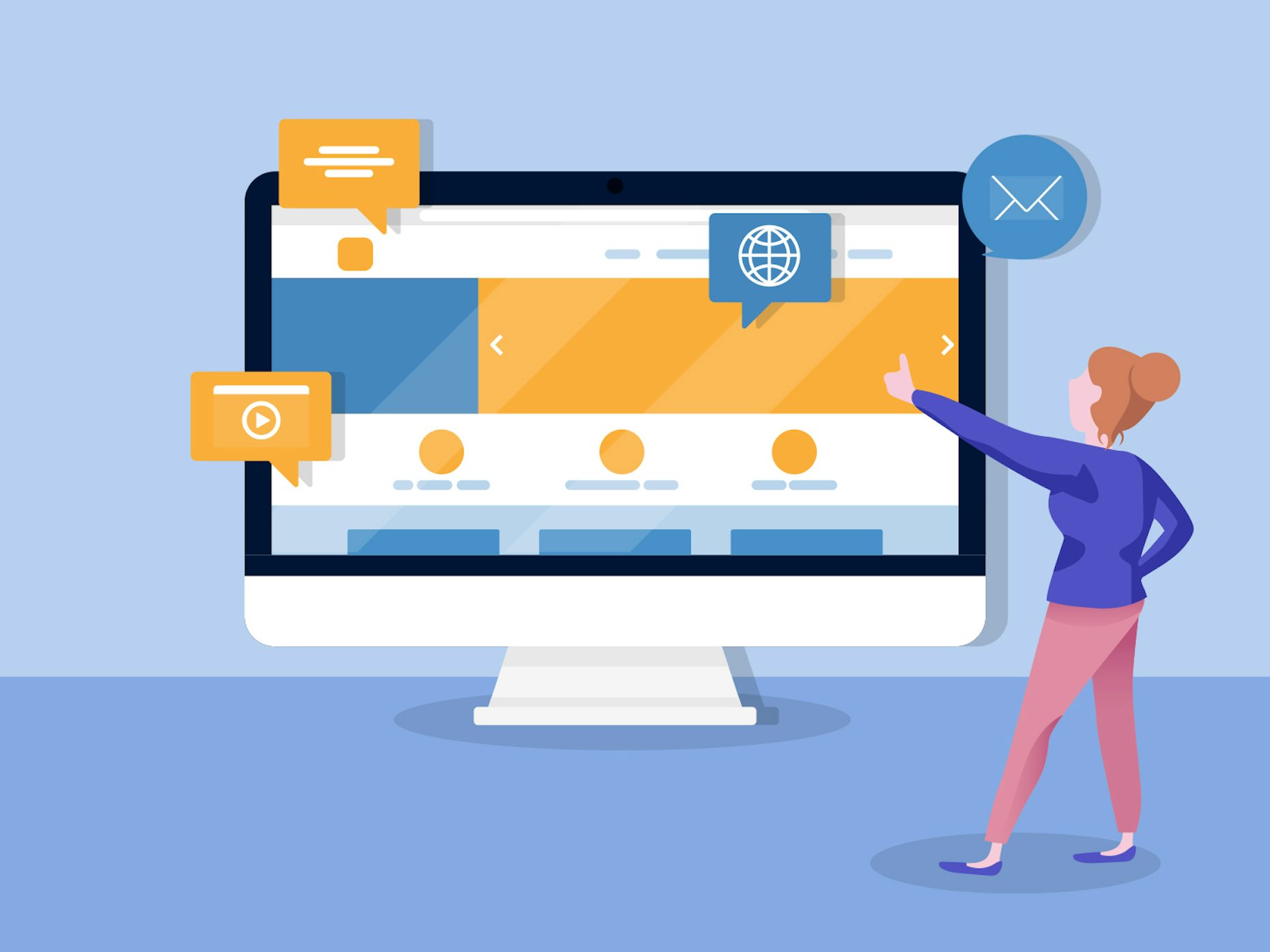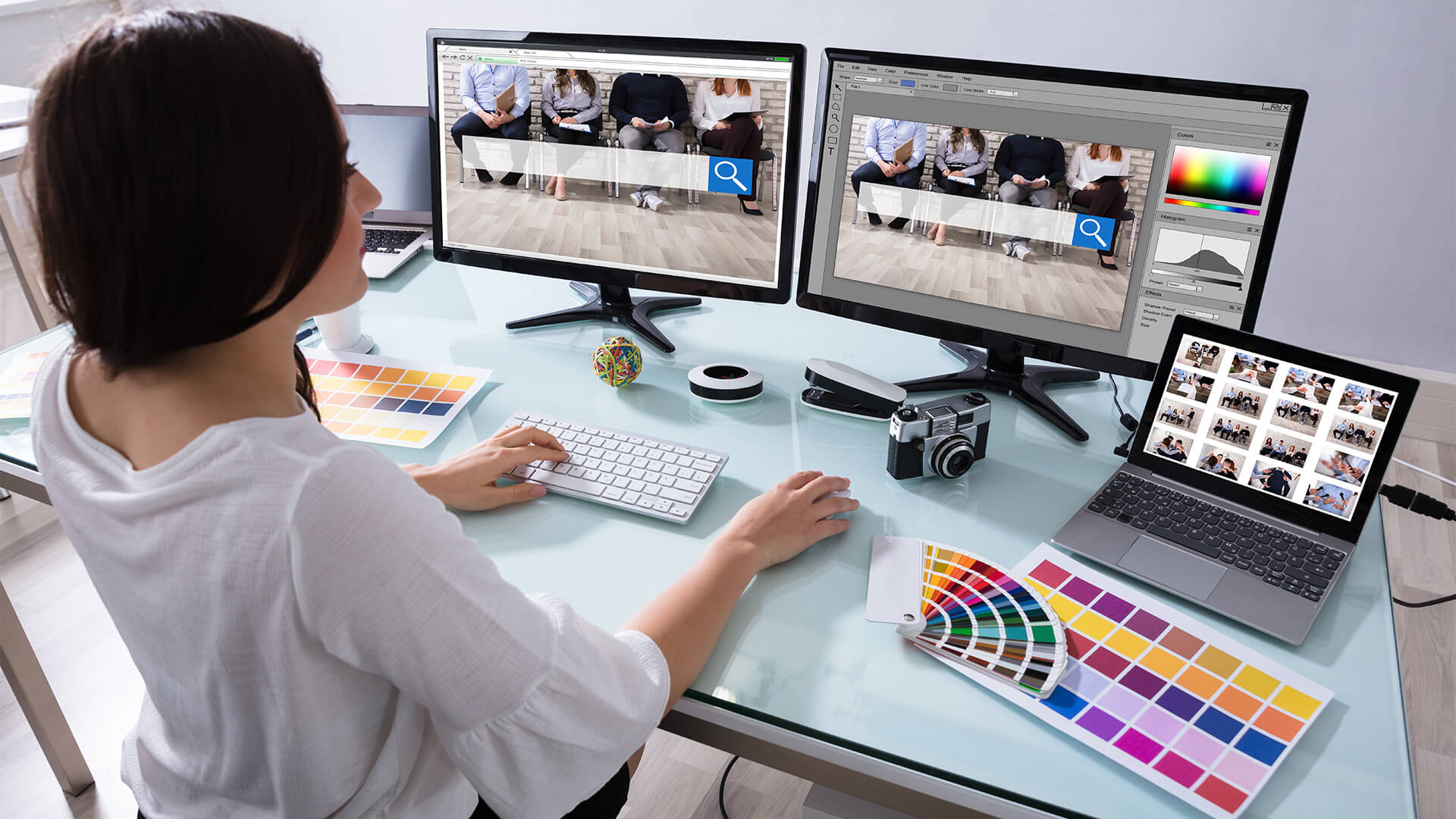All Categories
Featured
Table of Contents
- – Why Web Design Is Dead - - Ux Magazine Tips an...
- – Web Design Services + Website Development Age...
- – Chavez Web Design: Web Design San Diego - Bak...
- – Why Is Web Design Important? - 6 Reasons To I...
- – Web Design - Website Design Tutorials, Articl...
- – Google Web Designer - Home Tips and Tricks:
- – The Leader In Website Design – Squarespace T...
- – What Can I Do With A Web Design And Developm...
- – Ciw Web Design Series Tips and Tricks:
- – Pueblo Web Design Tips and Tricks:
- – Web Design - The First 100 Years - Idle Word...
Why Web Design Is Dead - - Ux Magazine Tips and Tricks:
Quick summary Usability and the energy, not the visual design, determine the success or failure of a site. Given that the visitor of the page is the only person who clicks the mouse and therefore decides whatever, user-centric style has developed as a basic approach for successful and profit-oriented web design - web design frederick md.
and the utility, not the visual design, determine the success or failure of a site. Because the visitor of the page is the only person who clicks the mouse and for that reason chooses whatever, user-centric design has actually become a basic approach for successful and profit-oriented web style. If users can't use a feature, it might as well not exist.
g. where the search box need to be placed) as it has currently been done in a variety of articles; rather we concentrate on the methods which, used properly, can cause more advanced design decisions and simplify the process of perceiving provided details. Please notice that you may be thinking about the usability-related articles we've released prior to: Principles Of Excellent Website Design And Effective Website Design Guidelines, In order to utilize the principles appropriately we first require to understand how users connect with websites, how they think and what are the basic patterns of users' behavior.
Web Design Services + Website Development Agency Tips and Tricks:
Visitors glimpse at each brand-new page, scan some of the text, and click on the first link that catches their interest or vaguely looks like the important things they're searching for. There are large parts of the page they don't even look at. Many users search for something interesting (or beneficial) and clickable; as quickly as some promising prospects are discovered, users click.
If a page provides users with top quality content, they are ready to compromise the material with ads and the style of the website. This is the reason why not-that-well-designed sites with premium material acquire a lot of traffic over years. Content is more crucial than the style which supports it.

Really basic principle: If a website isn't able to fulfill users' expectations, then designer stopped working to get his job done appropriately and the company loses cash. The higher is the cognitive load and the less intuitive is the navigation, the more willing are users to leave the website and search for options.
Chavez Web Design: Web Design San Diego - Bakersfield ... Tips and Tricks:
Neither do they scan webpage in a linear style, going sequentially from one website area to another one. Rather users satisfice; they pick the first reasonable alternative. As quickly as they find a link that appears like it might cause the objective, there is a great chance that it will be immediately clicked.
It does not matter to us if we understand how things work, as long as we can utilize them. If your audience is going to act like you're developing billboard, then style terrific signboards." Users wish to be able to manage their web browser and rely on the constant information discussion throughout the site.
If the navigation and website architecture aren't instinctive, the number of concern marks grows and makes it harder for users to understand how the system works and how to receive from point A to point B. A clear structure, moderate visual hints and quickly recognizable links can help users to discover their path to their objective.
Why Is Web Design Important? - 6 Reasons To Invest In Site ... Tips and Tricks:

Since users tend to explore websites according to the "F"-pattern, these three statements would be the first elements users will see on the page once it is loaded. The style itself is basic and intuitive, to understand what the page is about the user needs to search for the answer.
Once you've attained this, you can interact why the system is useful and how users can benefit from it. Do Not Misuse Users' Patience, In every project when you are going to provide your visitors some service or tool, try to keep your user requirements very little.
Newbie visitors want to, not filling long web types for an account they may never ever utilize in the future. Let users check out the website and discover your services without forcing them into sharing personal information. It's not affordable to force users to go into an e-mail address to test the feature.
Web Design - Website Design Tutorials, Articles And Free Stuff Tips and Tricks:
And that's what you want your users to feel on your web site. The registration can be done in less than 30 seconds as the type has horizontal orientation, the user does not even require to scroll the page.
A user registration alone suffices of an impediment to user navigation to minimize inbound traffic. 3. Handle To Focus Users' Attention, As sites supply both fixed and vibrant material, some elements of the interface draw in attention more than others do. Certainly, images are more appealing than the text simply as the sentences marked as vibrant are more attractive than plain text.
Focusing users' attention to particular locations of the website with a moderate usage of visual elements can assist your visitors to receive from point A to point B without thinking about how it really is supposed to be done. The less enigma visitors have, the they have and the more trust they can establish towards the business the site represents.
Google Web Designer - Home Tips and Tricks:
4. Make Every Effort For Function Exposure, Modern website design are typically slammed due to their technique of directing users with aesthetically appealing 1-2-3-done-steps, big buttons with visual results and so on. But from the design perspective these components in fact aren't a bad thing. On the contrary, such as they lead the visitors through the site content in an extremely easy and user-friendly method.
The site has 9 main navigation choices which are visible at the very first glance. What matters is that the material is well-understood and visitors feel comfy with the way they connect with the system.
com gets directly to the point. No cute words, no exaggerated declarations. Rather a cost: just what visitors are searching for. An optimal service for reliable writing is touse short and concise expressions (come to the point as rapidly as possible), use scannable layout (categorize the material, use several heading levels, utilize visual components and bulleted lists which break the circulation of consistent text blocks), use plain and unbiased language (a promotion does not need to seem like ad; give your users some sensible and unbiased reason that they need to utilize your service or stay on your website)6.
The Leader In Website Design – Squarespace Tips and Tricks:
Users are rarely on a website to enjoy the style; in addition, in many cases they are looking for the information regardless of the style - web design frederick md. Pursue simpleness rather of intricacy. From the visitors' viewpoint, the very best site style is a pure text, with no ads or further material blocks matching precisely the question visitors used or the content they've been trying to find.
Finch clearly presents the information about the site and offers visitors a choice of choices without overcrowding them with unnecessary content. Not only does it assist to for the visitors, however it makes it possible to perceive the information presented on the screen.
Complex structures are harder to check out, scan, analyze and deal with. If you have the option in between separating two style sectors by a noticeable line or by some whitespace, it's typically better to utilize the whitespace solution. (Simon's Law): the much better you manage to supply users with a sense of visual hierarchy, the simpler your content will be to view.
What Can I Do With A Web Design And Development Degree? Tips and Tricks:
The same conventions and rules ought to be used to all elements.: do the most with the least amount of cues and visual aspects. Clarity: all parts need to be created so their significance is not unclear.
Conventions Are Our Friends, Conventional style of website elements does not lead to a dull website. In fact, as they reduce the learning curve, the requirement to find out how things work. For circumstances, it would be a functionality nightmare if all sites had different visual discussion of RSS-feeds. That's not that different from our regular life where we tend to get utilized to basic principles of how we organize information (folders) or do shopping (placement of products).
understand what they're anticipating from a website navigation, text structure, search positioning etc. A case in point from usability sessions is to equate the page in Japanese (presuming your web users don't know Japanese, e. g. with Babelfish) and supply your usability testers with a job to discover something in the page of various language.
Ciw Web Design Series Tips and Tricks:
Steve Krug recommends that it's better to, however make the most of conventions when you do not. 10. Test Early, Test Often, This so-called TETO-principle ought to be used to every website design project as functionality tests often provide into significant issues and concerns connected to an offered design. Test not far too late, not insufficient and not for the wrong factors.
Some important indicate remember: according to Steve Krug, and testing one user early in the project is better than testing 50 near completion. Accoring to Boehm's very first law, errors are most frequent throughout requirements and design activities and are the more pricey the later they are gotten rid of.
That indicates that you design something, test it, fix it and after that evaluate it again. There may be problems which have not been discovered throughout the very first round as users were almost blocked by other issues. usability tests. Either you'll be pointed to the problems you have or you'll be indicated the lack of significant style defects which is in both cases an useful insight for your task.
Pueblo Web Design Tips and Tricks:

This holds for designers. After you have actually dealt with a site for few weeks, you can't observe it from a fresh viewpoint any longer. You understand how it is developed and for that reason you know exactly how it works you have the knowledge independent testers and visitors of your website wouldn't have.
It can be linked to other locations such as graphic style, user experience, and multimedia arts, but is more appropriately seen from a technological viewpoint. It has ended up being a large part of individuals's daily lives. It is hard to picture the Internet without animated graphics, different styles of typography, background, videos and music.

Throughout 1991 to 1993 the Internet was born. Text-only pages might be seen using a simple line-mode internet browser. In 1993 Marc Andreessen and Eric Bina, produced the Mosaic browser. At the time there were several internet browsers, however most of them were Unix-based and naturally text heavy. There had been no integrated technique to graphic style components such as images or noises.
Web Design - The First 100 Years - Idle Words Tips and Tricks:
The W3C was produced in October 1994 to "lead the Internet to its complete capacity by developing typical procedures that promote its advancement and ensure its interoperability." This discouraged any one company from monopolizing a propriety web browser and programs language, which might have modified the result of the World Wide Web as a whole.
As this has occurred the technology of the web has likewise carried on. There have also been significant modifications in the method people utilize and access the web, and this has actually altered how websites are created. Since completion of the web browsers wars [] new browsers have been released. A number of these are open source meaning that they tend to have faster development and are more helpful of new requirements.
Learn more about Lovell Media Group LLC or TrainACETable of Contents
- – Why Web Design Is Dead - - Ux Magazine Tips an...
- – Web Design Services + Website Development Age...
- – Chavez Web Design: Web Design San Diego - Bak...
- – Why Is Web Design Important? - 6 Reasons To I...
- – Web Design - Website Design Tutorials, Articl...
- – Google Web Designer - Home Tips and Tricks:
- – The Leader In Website Design – Squarespace T...
- – What Can I Do With A Web Design And Developm...
- – Ciw Web Design Series Tips and Tricks:
- – Pueblo Web Design Tips and Tricks:
- – Web Design - The First 100 Years - Idle Word...
Latest Posts
10 Principles Of Good Web Design - Smashing Magazine Tips and Tricks:
Siteinspire - Web Design Inspiration Tips and Tricks:
Web Design - Entrepreneur Tips and Tricks:
More
Latest Posts
10 Principles Of Good Web Design - Smashing Magazine Tips and Tricks:
Siteinspire - Web Design Inspiration Tips and Tricks:
Web Design - Entrepreneur Tips and Tricks: